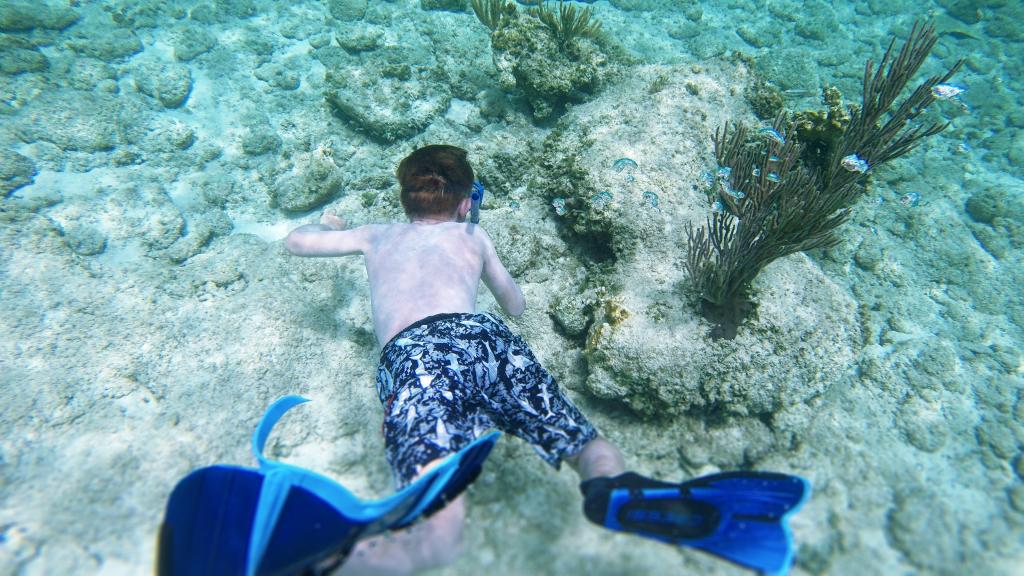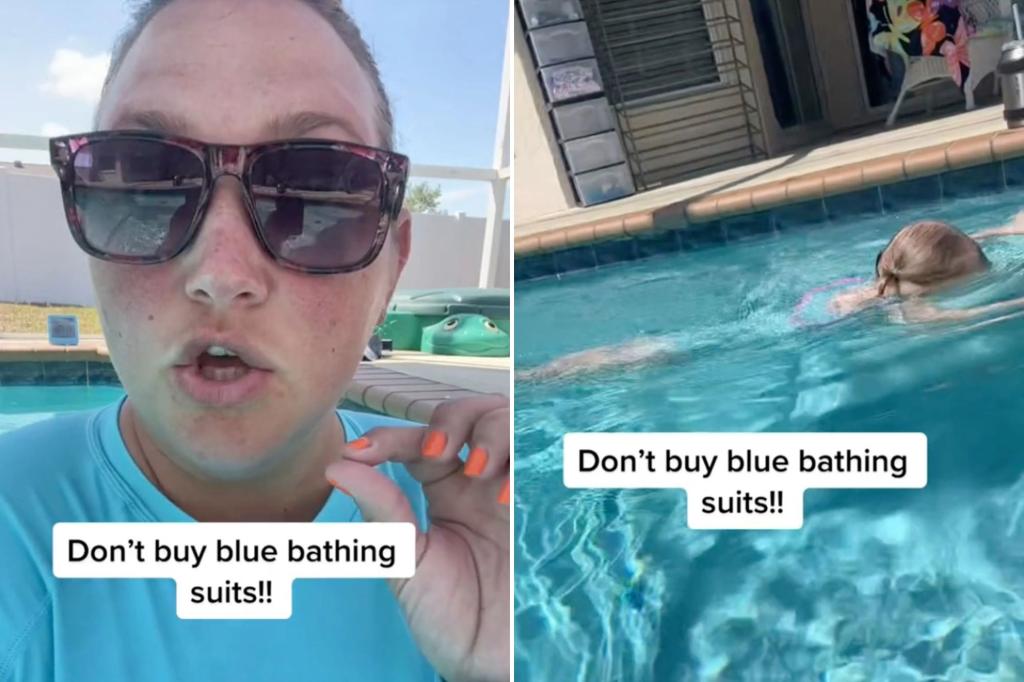The water is no place for summertime blues.
Nikki Scarnati, a licensed newborn Swimming instructor, posted a frightening video on TikTok advising parents that their children may be too disguised to be rescued if they wear swimwear that resembles the sea.
Scarnati demonstrated this by filming her little daughter swimming in a pool while wearing a blue one-piece bathing suit. The girl’s blond head could be seen bobbing on the water’s surface, occasionally dipping under, in the video, which has been viewed over 4.6 million times. However, the cerulean color of her swimsuit obscures the rest of her body.
The Spring Hill, Tennessee-based instructor explained that she bought the swimsuit for her daughter just for the video, citing how difficult it was to identify her kid in the water because it was the “same color as our environment.”
“This is why you do not put your children in blue bathing suits. Look at how difficult it is to see her under the water,” Scarnati explained. “And this is in calm water. This is not with a whole bunch of other kids playing and splashing around and having a good time.”


“So, do not buy blue bathing suits, guys,” she begged, suggesting parents “buy bright ones” instead.
Commenters agreed, thanking the mom and instructor for her advice.
“I’m a former lifeguard and this is absolutely right!” one user commented. “Any shade of blue is difficult to see, and so is any pastel light color in general.”
Swimming instructor Tiktok:
@scarnati.swim Just dont do it! Why think about which bathing suits for the splash pad? Just buy bright ones!! ☀️☀️ #selfrescue #selfrescueswimming #selfrescueswim #watersafety #drowningpreventionawareness #springhillisd
“That’s crazy I would have never even thought about it wow,” another wrote.
“I teach swim lessons. Proper colored suits are one of the things I require,” seconded another viewer.
“I never would’ve never thought of this. Thank you,” gushed another.
According to the Centres for Disease Control and Prevention, drowning is the second-leading cause of unintentional injury deaths among children aged 0 to 17 and the first among those aged 1 to 4.










